15 amazing things Super Smash Bros. will teach you about Nintendo
Taking 'em to school
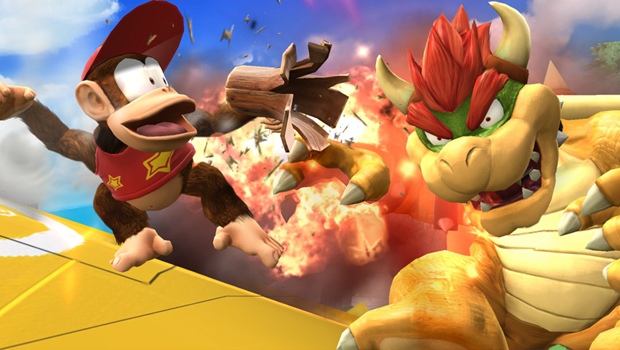
If you've ever poked around your trophy collection in the Super Smash Bros. games, you've probably noticed that they're an absolute treasure trove of nostalgic knowledge. Because Nintendo's premier fighting franchise is a mash-up of all its mascots, be they big or small, no reference is too obscure. The Smash series has opened gamers' eyes to a staggering amount of old-school Nintendo knowledge - and some of its secrets are legitimately mind-blowing.
And it's not like all the enlightening bits of trivia are relegated to trophy descriptions, either. Much of the references to Nintendo's storied history are hidden in plain sight, provided you know where to look for them. With Super Smash Bros. for Wii U and Super Smash Bros. for 3DS delighting Nintendo fans of all ages, there's no better time to learn some deep-cut stories behind the series' many, many callbacks. If you already know all of these, there's a good chance that you are Shigeru Miyamoto.
Kirby was originally supposed to be yellow
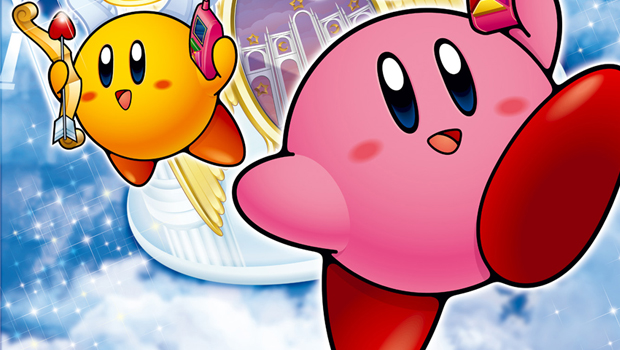
Some call him a benevolent god, others decry him as gaming's biggest troll - but whatever your personal feelings, Masahiro Sakurai deserves your respect for creating the Super Smash Bros. series. Bringing Smash to the world isn't Sakurai's only claim to fame: he also created Kirby, the adorable pink puffball with an iron stomach and a high-power vacuum for a mouth. Kirby's bright pink complexion is one of his most notable traits - but that wasn't part of his design from the start.
Because Kirby's Dream Land started life on the Game Boy, the monochromatic color scheme left Kirby's true color up in the air (which might explain why he appears to be ghost-white on the North American box art). Shigeru Miyamoto envisioned Kirby to be yellow, while Sakurai had his mind set on pink. In the end, Sakurai's decision won out - but the yellow Kirby lives on as an alternate color in Super Smash Bros., as well as spin-offs like Kirby and the Amazing Mirror or Kirby's Air Ride.
Smash Bros. revived a minor character from SimCity on SNES
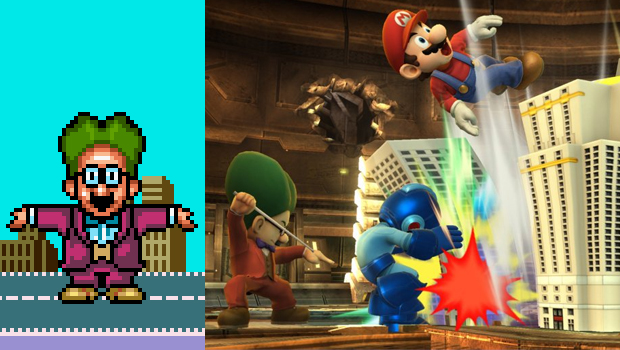
Most people associate the SimCity franchise with the PC, but the Super Nintendo port of the city-builder genre's granddaddy was received quite well back in the day. It even has content exclusive to Nintendo's 16-bit console, like your helpful, green-haired advisor Dr. Wright (a reference to SimCity creator Will Wright).
Throughout the game, Dr. Wright gives the mayor (that's you) tips on what to do next, using his wealth of knowledge on city governments and natural disasters for reference. Even though SimCity as a series belongs to EA Maxis, Dr. Wright is actually Nintendo's property - and he was brought back as one of the most obscure trophies ever in Smash Bros. Melee. In Super Smash Bros. for Wii U/3DS, Dr. Wright returns once again as an Assist Trophy, spawning giant skyscrapers from the ground to impale your enemies. And yes, his hair still looks like a big green butt sprouting out of his head.
Shigeru Miyamoto made a game too scandalous for North America
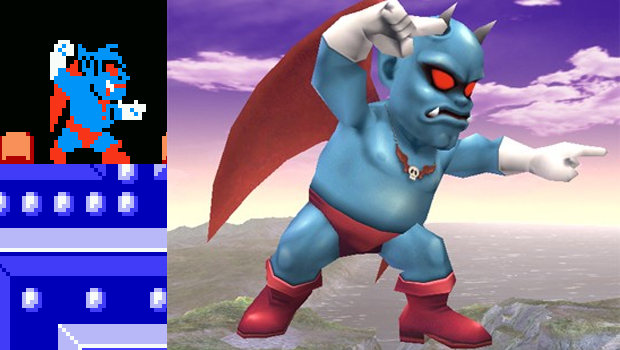
When you think of legendary Nintendo auteur and Mario creator Shigeru Miyamoto, you typically picture a family-friendly game design genius. But there was a time when some conservative parents might have mistaken him for a heretic practitioner of the dark arts. That's because of his work on Devil World, a Pac-Man clone that was banned from release in North America when it debuted in 1984.
Sign up to the GamesRadar+ Newsletter
Weekly digests, tales from the communities you love, and more
At the time, Nintendo of America had a policy that there could be no religious iconography in its releases, which complicates things when your game features crosses, Bibles, and a tubby red-and-blue devil sitting front and center at all times. To this day, Devil World still hasn't had an official NA release - but the titular Devil makes an appearance as a screen-disorienting Assist Trophy in the latest Super Smash Bros.
One of Nintendo's first games was heavily inspired by Pong
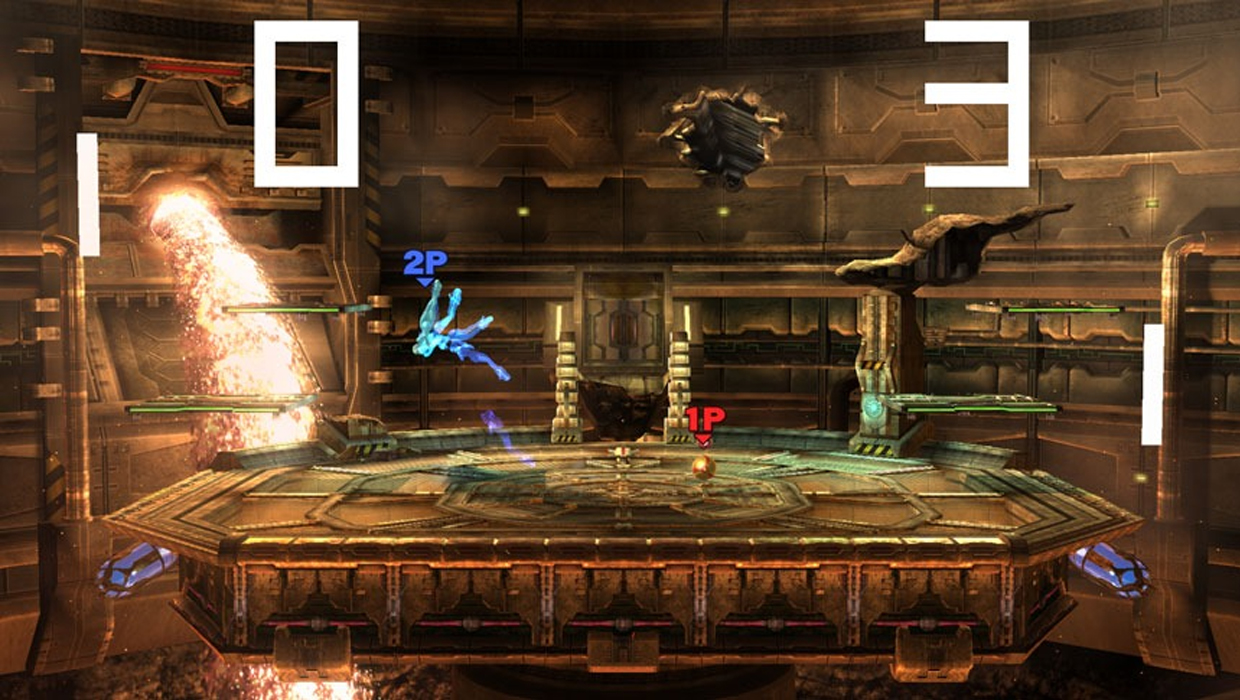
One of the cornerstones of Nintendo history is that the company spent decades as a toy manufacturer, making playthings for children long before video games were even invented. Once Pong started the digital gaming boom in the 1970s, Nintendo jumped on the bandwagon just like many of its competition, crafting its own version of Pong. And that history is coming back to the forefront as an Assist Trophy in Smash Bros.
The TV-Game 15 came out in 1977, offering a number of variations on virtual tennis for home console play in Japan. And now that very early game of Nintendo's is front and center whenever someone uses the Assist Trophy. It's easy to look back on the game as Nintendo ripping off Pong, but back then the console market was almost entirely made up of clones of the little rectangles. At least Nintendo is being upfront about it with their biggest game of 2014.
Luigi's alt costumes include a reference to an anime never released in the US
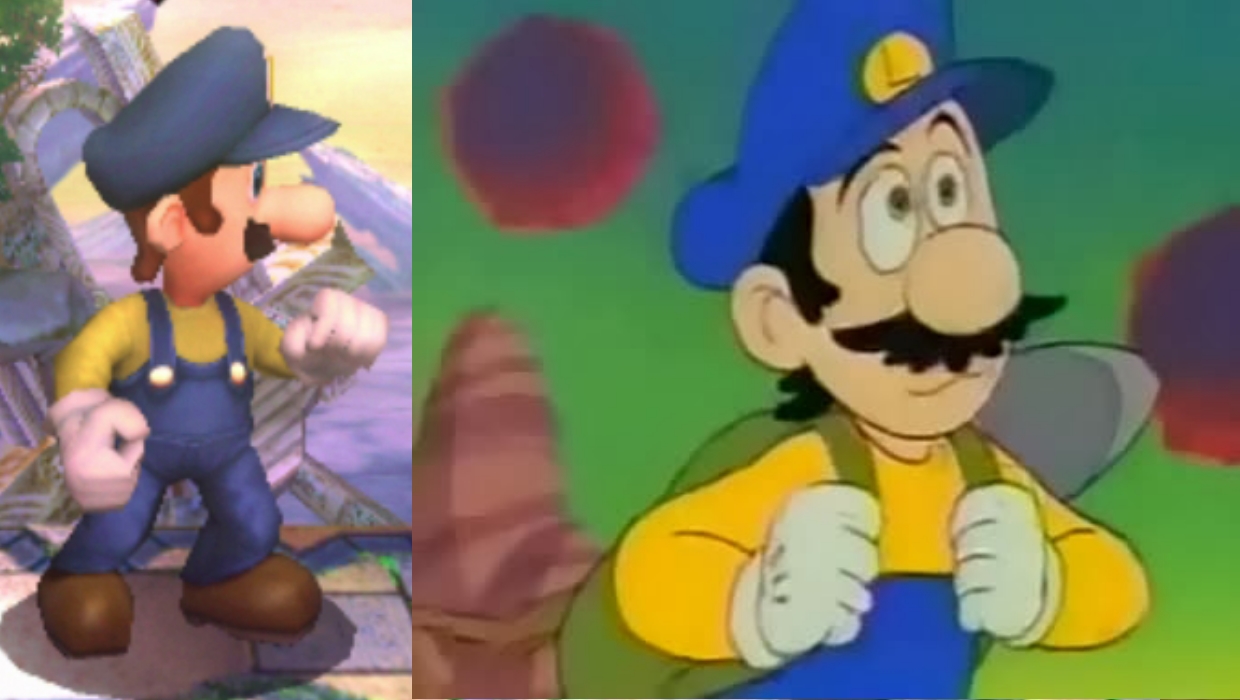
The Super Mario Bros. film is likely low on the list of Nintendo's proudest moments. Star Bob Hoskins was very open about it being his most hated role. Based on its box office failure, it may go down as the last Mario film, but it isn't the first. That distinction goes to the Japan-only animated feature, Super Mario Bros.: The Great Mission to Rescue Princess Peach! Released in 1986, just as Super Mario fever was engulfing Japan and the US, the film has fallen into obscurity and is rarely (if ever) brought up by Nintendo. That is, until Smash Bros. snuck in a reference via a character's pallette swap.
The 3DS/Wii U versions offer more variations on the roster's coloring than ever before, so the devs dug deep for some of the outfits getting recreated. Luigi's combo of yellow and blue may not make sense to most fans, but a handful will recognize it instantly as his outfit from the super rare anime. It's a cool Easter egg, and raises the obvious question: Why the hell is Luigi animated to look nothing like his NES counterpart?
Punch-Out!! started as an arcade game
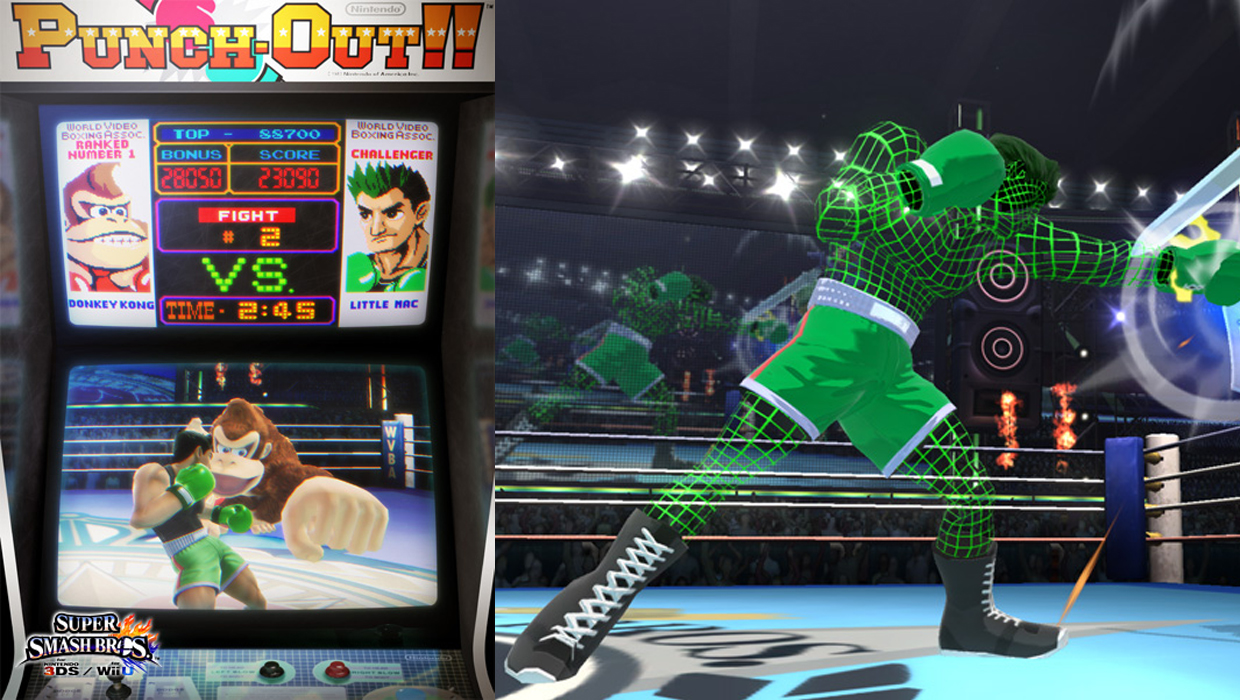
When I recently wrote about Super Punch-Out!! as a 1984 arcade release, some smartypants comments informed me that "Duh, that's a SNES game from 1994, stupid!" (I'm paraphrasing.) In their rush to try to prove someone wrong on the internet, they overlooked that the Punch-Out!! series got its start in arcades years before it boxed its way onto consoles. Hopefully the next Smash Bros. will finally get these folks caught up with Little Mac's pre-NES years via some interesting Easter eggs.
When Mac was first announced for Smash Wii U/3DS, the original arcade unit was front and center in the accompanying character art--perhaps because more Japanese players recall him from arcades than the NES classic. For added background, one of Little Mac's alt costumes is the green, see-through wireframe model he sported in the original arcade Punch-Out!! Could this also mean a cameo from the arcade version of Bald Bull?
Meet Sable Prince, star of the Japan-only The Frog For Whom The Bell Tolls
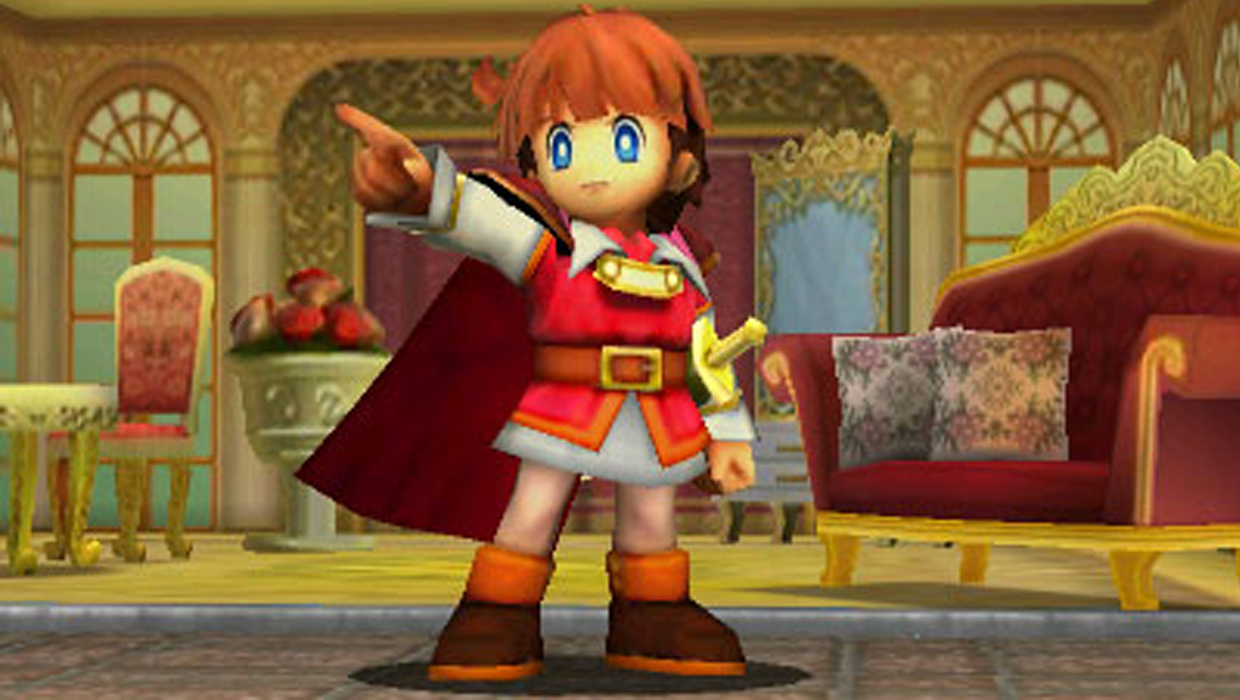
Nintendo is one of the most internationally-minded publishers around, releasing virtually all of its games worldwide every year. But two decades ago, Nintendo wasn't as eager to translate all of its catalogue, especially not oddball Game Boy titles. 1992's Kaeru no Tame ni Kane wa Naru (translated as The Frog For Whom the Bell Tolls) is such a title and, despite being made by the same team as original Metroid and Kid Icarus, the game is a virtual unknown in the US and Europe. The next Smash Bros. might change that.
The Assist Trophy for protagonist Sable Prince looks ripped straight from the box art, and he uses several of his power-ups from the game (not that most western fans will recognize them). His snake and frog transformations will appear during his attacks, as does the resulting dust cloud that also pops up in the prince's own game. Clearly Sakurai is a fan of the forgotten title, so perhaps this is signaling plans for his next game to be The Frog For Whom the Bell Tolls: Uprising.
The Sheriff Assist Trophy is an accurate recreation of Nintendo's earliest star

Smash Bros. is all the evidence you'll need of Nintendo's ability to create compelling mascots, but the publisher's earliest character lacks the good looks of his stablemates. Released in arcades in 1979, Sheriff predates Donkey Kong by two years, and the wild west title's primitive graphics have aged far worse than its latters. Funnily enough, the characters in both releases were designed by Shigeru Miyamoto, so you can see how much he grew as a creator in his early years.
The game itself is a bit like a twin stick shooter meets Space Invaders, with Sheriff surrounded on all sides by enemies that he has to blast before getting shot himself. The only difference is that the standard second stick is replaced with a dial that you turn to face one of eight directions. That unique gameplay detail comes through in Smash Bros. Wii U/3DS, as the Assist Trophy also shoots in those same directions. Only now, Sheriff's attacks seem to be more explosive, but also way less deadly.
Takamaru hails from the Famicom Disk System

As long as I'm bringing up Nintendo games that never left Japan, let's add Takamaru to that list. He's the star of The Mysterious Murasame Castle, one of the first games for the Famicom Disk System, a Japanese add-on that never saw an equivalent release in the West. The game is set in feudal Japan and follows Takamura on his samurai quest to defeat four warlords via top-down exploration a la Legend of Zelda (only faster-paced). Given the game's connections to Japanese history and an add-on that never came to the US and Europe, it's no surprise Takamaru and friends weren't translated back in the day.
Leave it to Smash Bros. to introduce Takamaru to unfamiliar gamers abroad, just as it did for Fire Emblem's Marth in the past. Takamaru is a katana-swinging Assist Trophy (some had hoped he'd be fully playable), and the power of his blade is already being felt in the West. And to accompany his Smash announcement, The Mysterious Murasame Castle got it's first official US release with a port to the 3DS eShop. Sure, this version remains untranslated, but a little thing like that won't stop Nintendo's most hardcore fanatics.
Henry Gilbert is a former GamesRadar+ Editor, having spent seven years at the site helping to navigate our readers through the PS3 and Xbox 360 generation. Henry is now following another passion of his besides video games, working as the producer and podcast cohost of the popular Talking Simpsons and What a Cartoon podcasts.



